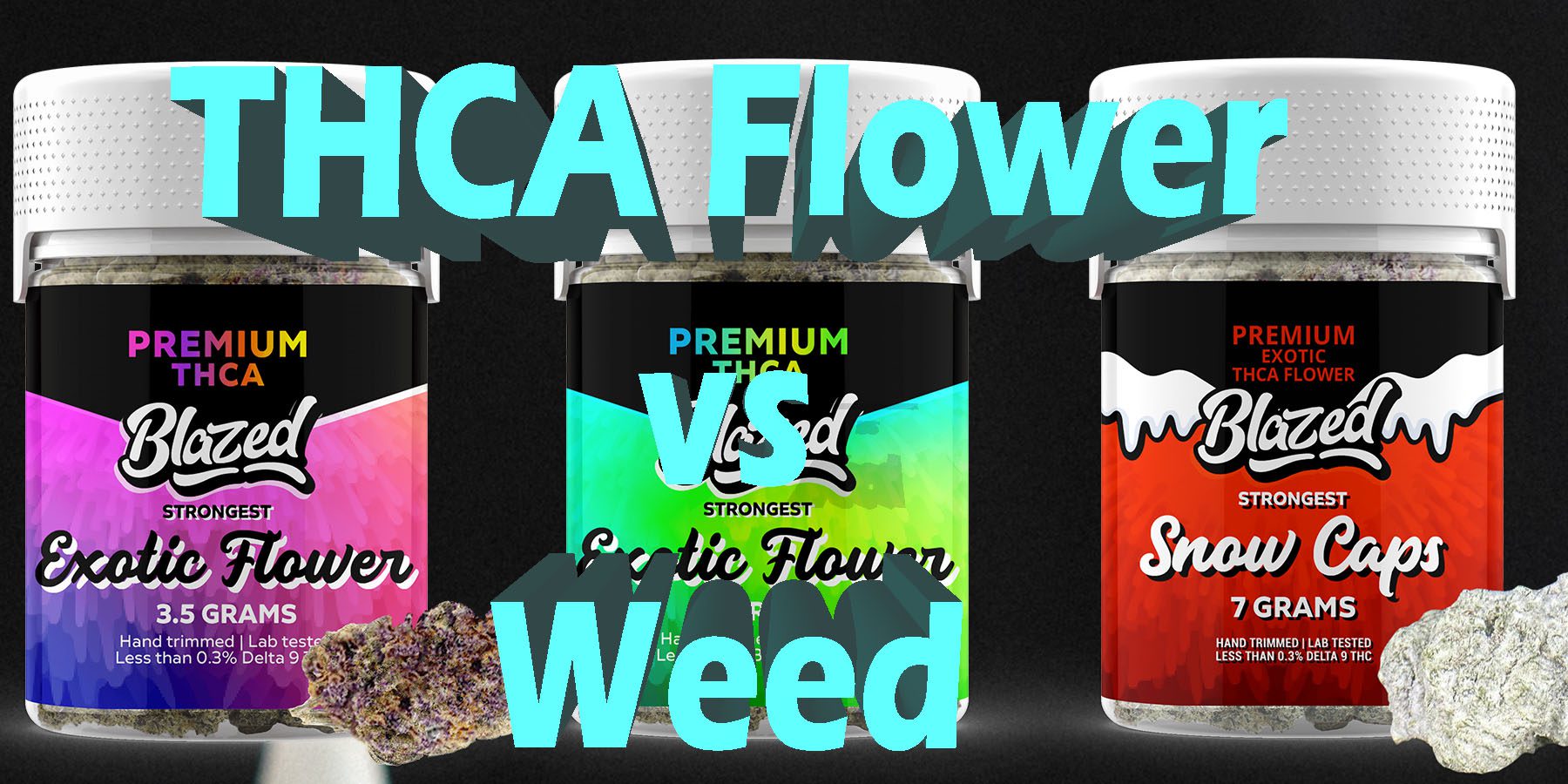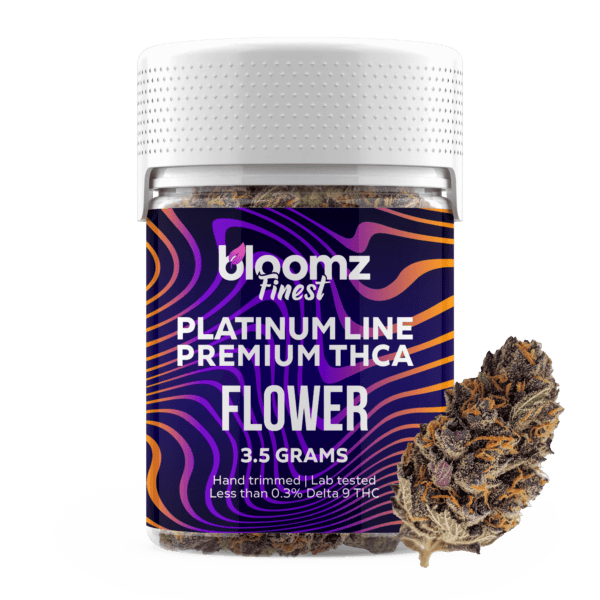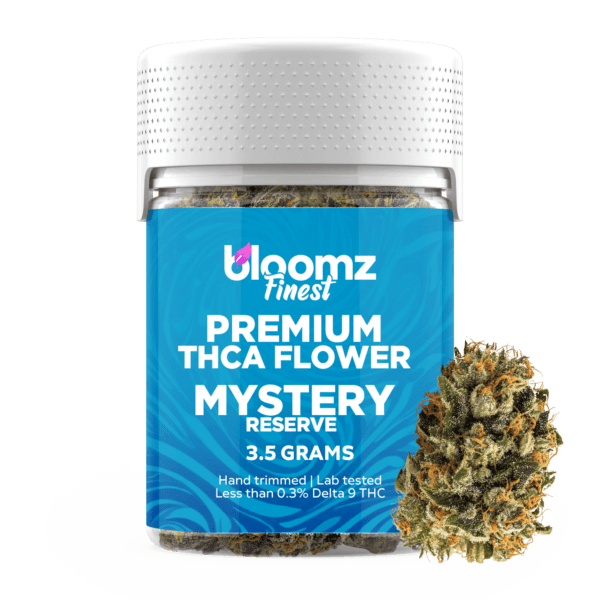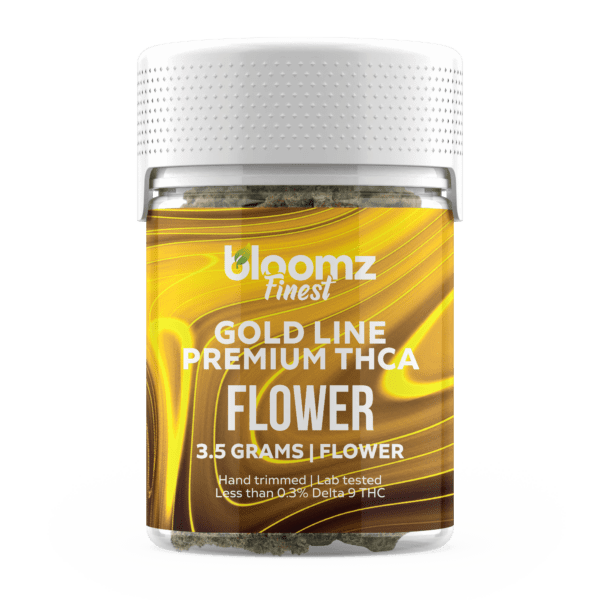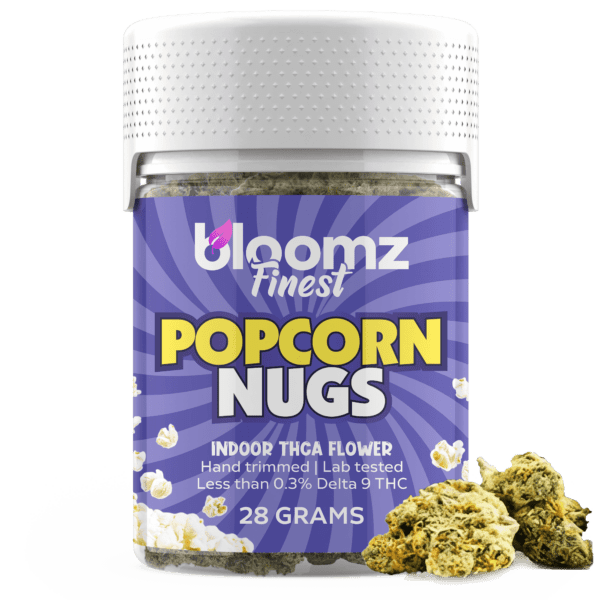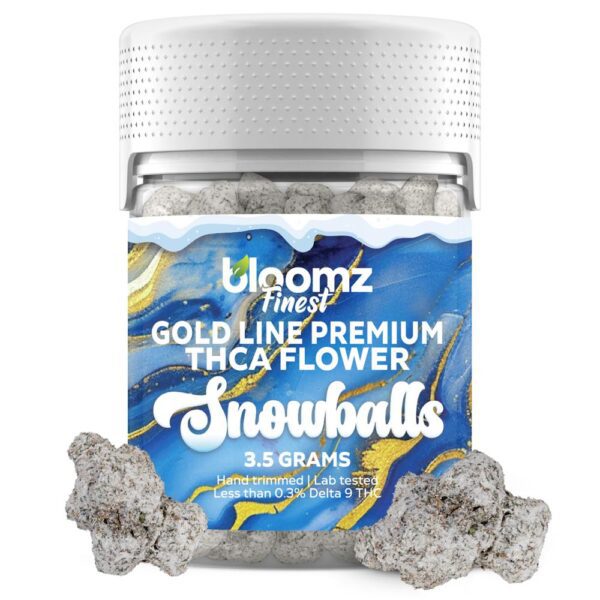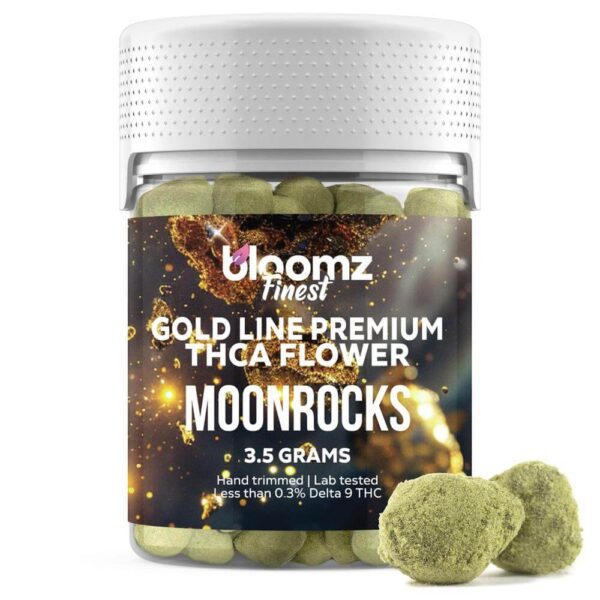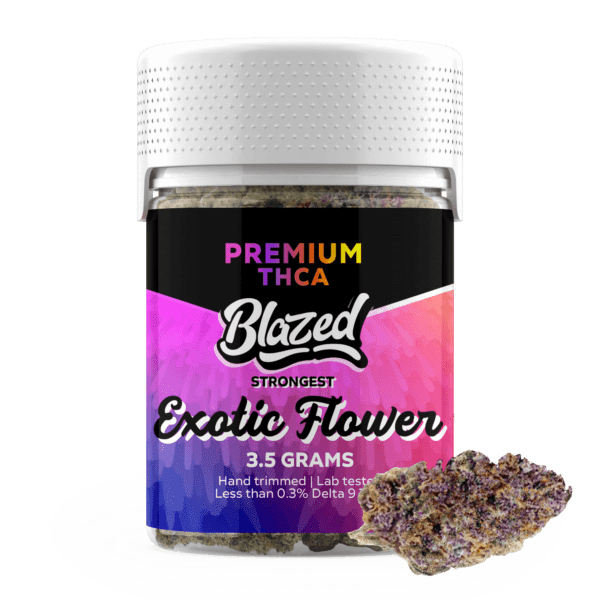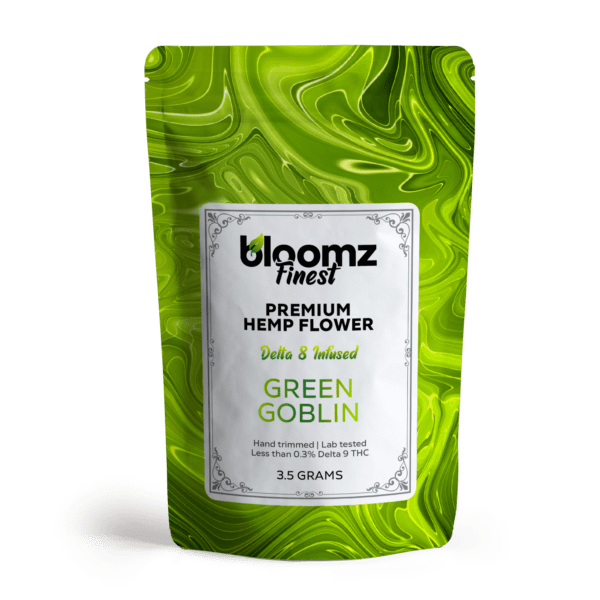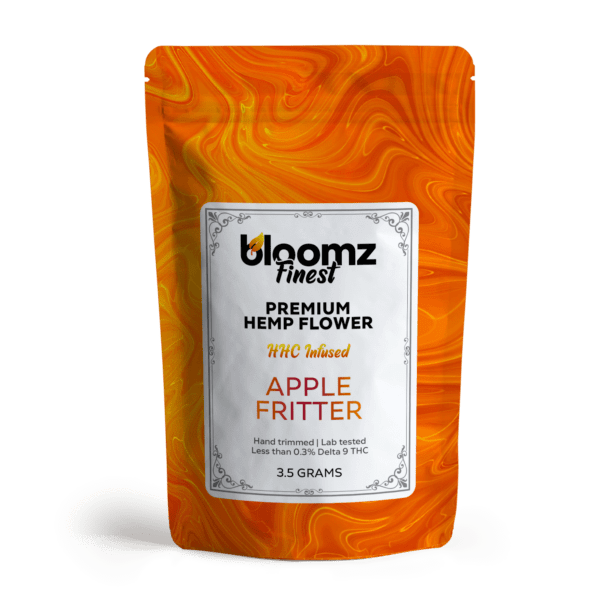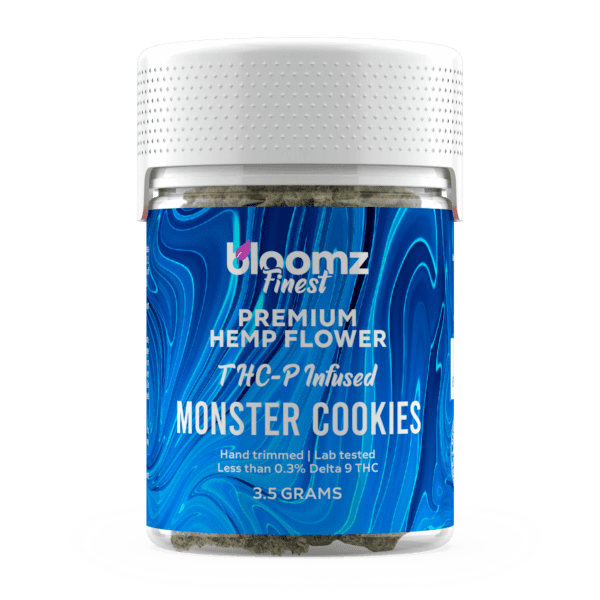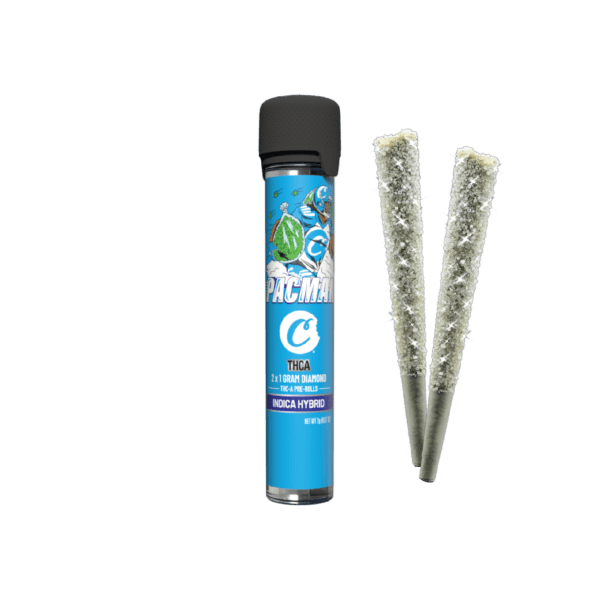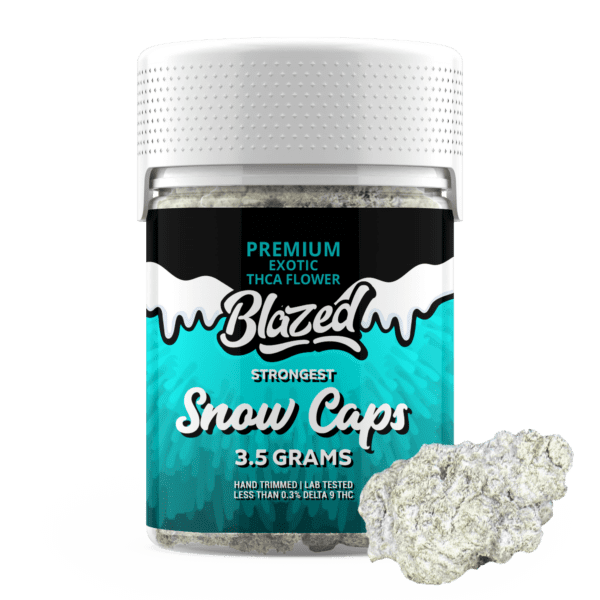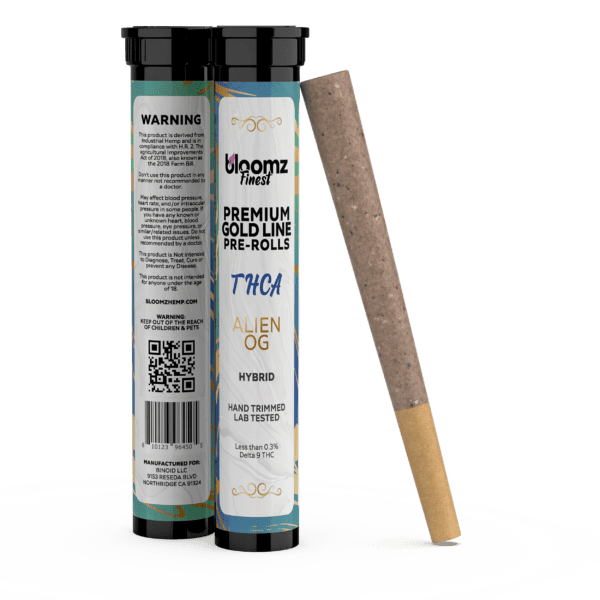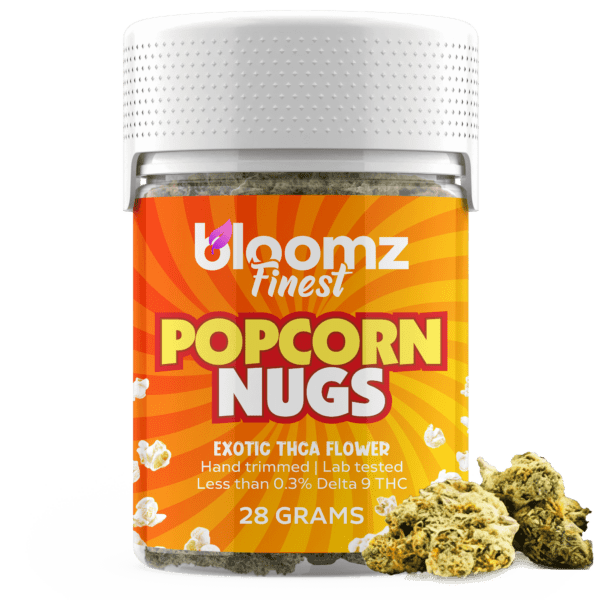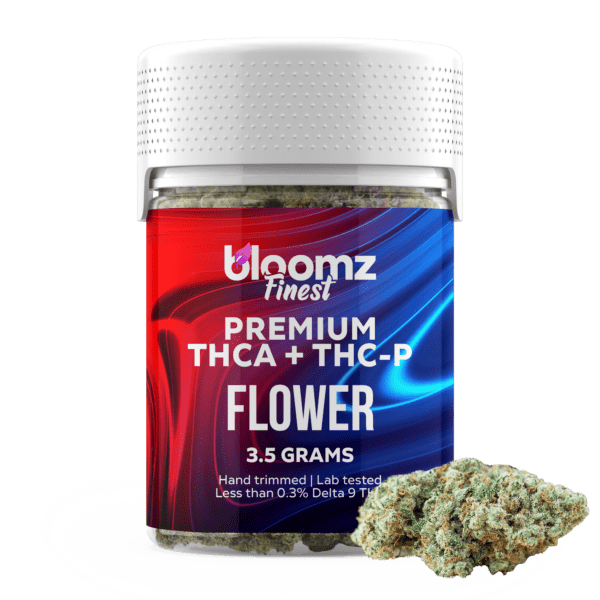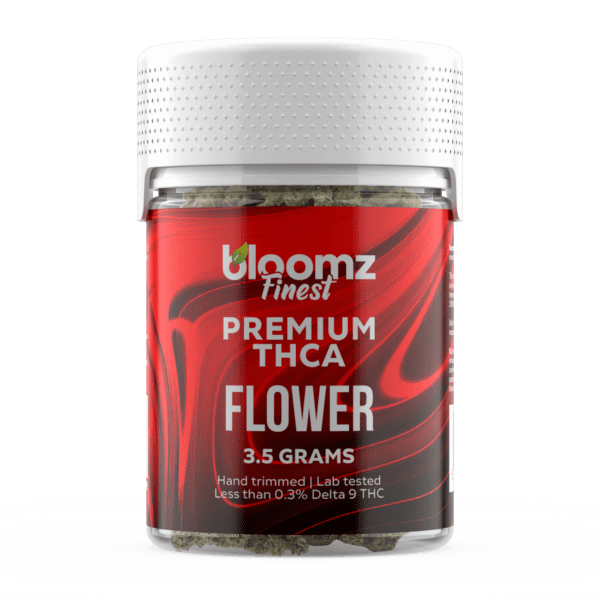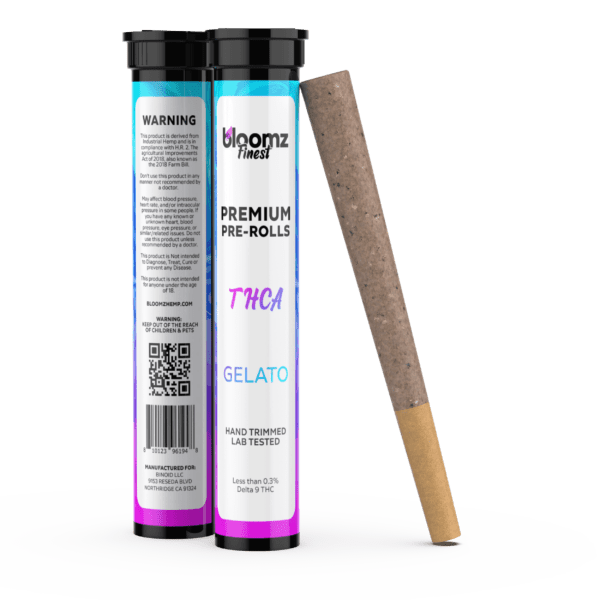The world of cannabis is in a constant state of fascinating evolution, a botanical realm where science and nature intertwine to create a landscape that is as complex as it is captivating. For enthusiasts and newcomers alike, navigating this terrain can feel like exploring a vast, uncharted territory filled with novel discoveries at every turn. Recently, a new contender has stepped into the spotlight, sparking conversations and curiosity across the community, its name whispered with a mix of intrigue and confusion: THCA flower. This has inevitably set the stage for a compelling matchup against the long-reigning champion of the cannabis world, traditional weed.
The comparison between these two is not just a simple matter of semantics; it delves into the very heart of cannabis chemistry, legality, and the user experience itself. Understanding the distinctions is key to appreciating the incredible diversity and sophistication of the modern cannabis market.
To Buy THCA Flower Click Here
Recommended products
-
THCA Flower – Platinum Line
$49.99$79.99 -
THCA Flower – Mystery Reserve
$41.99$79.99 -
THCA Flower – Indoor Exotics – Gold Line
$37.99$69.99 -
THCA Smalls
$149.99$256.99
Why It’s Important to Breakdown the Matchup of THCA Flower vs. Weed
Dissecting the nuances between THCA flower and traditional weed is far more than an academic exercise; it’s a crucial endeavor for any consumer looking to make informed and confident choices in today’s dynamic marketplace. The proliferation of hemp-derived products, spurred by evolving legislation, has introduced a lexicon of new terms and compounds that can easily blur the lines for even seasoned users. Failing to grasp the fundamental differences in their chemical composition, legal standing, and resulting effects can lead to confusion, mismatched expectations, and potentially unintended consequences.
A clear breakdown demystifies the science, empowers consumers with knowledge, and fosters a safer, more transparent industry for everyone involved:
Navigating the Legal Labyrinth: One of the most critical reasons to understand this distinction is the profoundly different legal landscape each product occupies. THCA flower exists in a unique space carved out by the 2018 Farm Bill, which federally legalized hemp containing less than 0.3% Delta 9 THC by dry weight. This has made THCA flower accessible in many regions where traditional weed remains prohibited. Conversely, traditional weed, defined by its higher Delta 9 THC content, is federally classified as a Schedule I controlled substance, with its legality determined by a patchwork of individual state laws. Understanding this difference is paramount for consumers to ensure they are complying with local and federal regulations, avoiding potential legal jeopardy while enjoying their chosen products responsibly and with peace of mind.
Understanding Chemical Transformation and Effects: At the core of the THCA versus weed debate is a fascinating bit of chemistry known as decarboxylation. THCA (tetrahydrocannabinolic acid) is the non-intoxicating acidic precursor to Delta 9 THC, the compound most associated with the classic “high” of weed. This transformation requires heat. Therefore, the potential effects of consuming raw THCA flower are vastly different from those experienced after smoking, vaping, or cooking it. By breaking down this matchup, consumers can learn precisely how and why THCA flower can provide an experience remarkably similar to traditional weed when heated, and why its raw form offers entirely different possibilities. This knowledge allows users to tailor their consumption method to achieve their desired outcome, whether that’s the potent euphoria from activated THC or the non-intoxicating properties of raw cannabinoids.
Ensuring Product Transparency and Quality: The distinction between these two products also has significant implications for quality control and consumer safety. The market for federally legal, hemp-derived products like THCA flower operates under a different set of regulations than state-licensed recreational or medical cannabis markets. A thorough breakdown encourages consumers to look beyond marketing claims and scrutinize lab reports, often called Certificates of Analysis (COAs). By understanding what to look for—specifically the percentages of THCA and Delta 9 THC—customers can verify a product’s legality, confirm its potency, and ensure it has been tested for harmful contaminants like pesticides, heavy metals, and residual solvents. This level of informed scrutiny pushes the entire industry toward higher standards of transparency and accountability.
Aligning Expectations with Experience: Ultimately, a clear comparison helps consumers align their expectations with the actual experience each product delivers. Someone purchasing THCA flower expecting an immediate, potent effect from eating it raw would be disappointed, while someone in a state where traditional weed is illegal might be thrilled to discover a federally compliant alternative that provides a similar experience when heated. By explaining the journey from a non-intoxicating cannabinoid (THCA) to an intoxicating one (THC), this breakdown prevents misunderstandings and ensures users can accurately anticipate the character, intensity, and nature of the effects. It’s about creating a predictable and enjoyable experience by empowering the user with foundational knowledge.
Contender #1: THCA Flower
In the ever-expanding universe of hemp-derived products, THCA flower stands as the venerable patriarch, the foundational source from which so many other innovations spring. It represents a return to the roots of the plant, offering an experience that is deeply connected to the earth and the art of cultivation. This is the classic form, celebrated for its complex aromas, rich flavors, and the visual beauty of its crystalline-dusted buds. For many connoisseurs, THCA flower is not just a product but an experience in itself—a tactile and aromatic journey that begins the moment you open the jar. It engages all the senses, from the sticky texture of the trichomes to the crackle of the ignited herb, providing a full-bodied ritual that modern alternatives often seek to replicate but can rarely duplicate. It is the benchmark against which all other forms are measured, a testament to the enduring appeal of the natural, unprocessed plant in all its glory.
At the heart of this classic contender lies a fascinating cannabinoid known as tetrahydrocannabinolic acid (THCA) – in its raw, unheated state within the cannabis and hemp plants, THCA is a non-intoxicating acidic precursor to the most famous cannabinoid of all, Delta 9 THC. Imagine it as the dormant form, patiently waiting for the right conditions to transform. This is why consuming raw, freshly harvested hemp flower will not produce the euphoric effects commonly associated with THC. The molecular structure of THCA includes an extra carboxyl group (a chain of carbon, oxygen, and hydrogen atoms) that prevents it from binding effectively with the CB1 receptors in the brain, the primary neurological sites responsible for producing intoxicating effects. It exists in abundance on the trichomes—the tiny, glistening, crystal-like glands that cover the surface of the buds and leaves of the plant.
The magical transformation from non-intoxicating THCA to psychoactive Delta 9 THC occurs through a process called decarboxylation. This is a scientific term for a very simple action: applying heat. When you light a pre-roll, heat the chamber of a dry herb vaporizer, or bake the flower in an oven to make edibles, you are causing that extra carboxyl group on the THCA molecule to break off and release as carbon dioxide (CO2). Once this happens, the molecule is converted into Delta 9 THC, now perfectly shaped to bind with those CB1 receptors and deliver its well-known effects. This crucial, heat-activated conversion is the entire basis for why THCA flower has become so popular. It allows for a product that is legally compliant in its raw form under federal law, yet capable of providing a potent and authentic experience when consumed in the traditional manner. Understanding this simple yet profound chemical reaction is the key to appreciating the unique position THCA flower holds in the market.
So then, THCA flower is, quite simply, premium hemp flower that has been selectively bred and cultivated to produce exceptionally high levels of tetrahydrocannabinolic acid while keeping the concentration of Delta 9 THC below the legal federal limit of 0.3% by dry weight. Visually, aromatically, and texturally, it is virtually indistinguishable from traditional high-THC cannabis flower found in state-licensed dispensaries. It is the result of meticulous genetic selection and advanced agricultural techniques aimed at maximizing the plant’s natural production of the THCA cannabinoid. This allows consumers in many regions to legally purchase a product that offers an experience identical to that of traditional cannabis, as the simple act of applying heat (smoking or vaping) converts the abundant THCA into Delta 9 THC. The production of high-quality, compliant THCA flower is a multi-stage process that requires precision, patience, and scientific oversight.
Recommended products
The production of high-quality THCA flower is a meticulous process that combines horticultural expertise with precise scientific control. It begins with genetics, where breeders selectively cross-pollinate cannabis plants to develop strains that naturally produce high levels of THCA while keeping Delta 9 THC levels inherently low throughout the growing cycle. The goal is to maximize the plant’s potential while ensuring it remains legally compliant. Once the right genetics are secured, the cultivation process begins, which can be broken down into several key stages:
Germination and Seeding: The process starts with high-quality seeds being germinated in a controlled environment. Once they sprout, they are carefully transferred to a growing medium, where they begin their journey as seedlings. This initial stage requires careful attention to light, humidity, and temperature to ensure a strong and healthy start.
Vegetative Stage: During this stage, the plant focuses on growing its stalks, leaves, and root system. It requires long periods of light (typically 18-24 hours per day) to encourage robust growth. Growers provide a nutrient-rich diet, carefully managing nitrogen, phosphorus, and potassium levels to build a strong foundation for the flowering stage to come. This phase can last anywhere from a few weeks to a couple of months, depending on the desired plant size and strain.
Flowering Stage: To trigger the flowering stage, the light cycle is changed to approximately 12 hours of light and 12 hours of uninterrupted darkness. This change signals to the plant that it’s time to reproduce, and it begins to develop its buds, or flowers. This is the critical period when the plant ramps up its production of cannabinoids and terpenes within the trichomes. Growers must meticulously monitor the environment and nutrient mix to support this energy-intensive process and protect the plants from pests or mold.
Harvesting: The timing of the harvest is crucial. Growers watch the trichomes closely, typically using a magnifying glass. The color of the trichomes (from clear to milky white to amber) indicates the peak of cannabinoid production. The plants are harvested by cutting them down at the base, and then they are often trimmed of their large fan leaves to prepare them for the next step.
Drying and Curing: This is arguably one of the most important stages for ensuring a high-quality final product. The trimmed plants or individual branches are hung to dry in a dark, climate-controlled room with specific temperature and humidity levels for about 7-14 days. After drying, the buds are trimmed more precisely and placed in airtight containers for the curing process. Curing can last for several weeks to months. This slow, controlled process breaks down chlorophyll, improves the smoothness and flavor of the final product, and preserves the delicate terpene and cannabinoid profile, ensuring the THCA remains stable, and the Delta 9 THC stays below the legal threshold.
Testing and Packaging: Before being sold, reputable producers will send samples of the final cured flower to a third-party laboratory. The lab tests for cannabinoid potency (to confirm high THCA and compliant Delta 9 THC levels), terpene profiles, and the absence of contaminants like pesticides, heavy metals, and mold. Once a batch passes testing, it is packaged in airtight, light-proof containers to preserve its freshness and quality until it reaches the consumer.
The market for THCA flower has rapidly diversified, offering a stunning array of product types that cater to different preferences, budgets, and consumption styles. This variety mirrors the traditional cannabis market, providing consumers with a wealth of options to explore, each with its own unique characteristics and appeal. From meticulously grown indoor buds to convenient, ready-to-use pre-rolls, the selection ensures that both newcomers and seasoned connoisseurs can find a product that perfectly suits their needs. This expansion of choice is a testament to the industry’s innovation and its commitment to meeting the diverse demands of its growing customer base:
Indoor THCA Flower: This category represents the gold standard for quality and consistency in the world of THCA flower. Cultivated in highly controlled indoor environments, these plants are shielded from the unpredictability of the outdoors, such as pests, inclement weather, and inconsistent sunlight. Growers have complete command over every aspect of the cultivation process, from dialing in the precise light spectrum with advanced LED or HID systems to managing temperature, humidity, and airflow with scientific precision. This meticulous control allows the plant to express its genetic potential to the fullest, resulting in buds that are typically dense, perfectly structured, and coated in a thick, shimmering layer of crystalline trichomes. The terpene profiles are often more potent and complex, leading to exceptionally rich aromas and flavors. While indoor THCA flower commands a premium price due to the higher operational costs, it is the preferred choice for connoisseurs who prioritize visual appeal, potent effects, and a consistent, top-tier experience.
Outdoor THCA Flower: Grown under the natural power of the sun and in the open air, outdoor THCA flower offers a more rustic and traditional cannabis experience. This cultivation method is far less resource-intensive than indoor growing, which often translates to a more accessible price point for the consumer. The plants benefit from the full spectrum of natural sunlight, which some purists argue leads to a more robust and complex cannabinoid and terpene profile that cannot be replicated artificially. The appearance of outdoor buds can be more varied; they are often larger and less dense than their indoor counterparts, with a darker coloration. The flavor and aroma profiles can be wonderfully unique, often carrying subtle earthy or floral notes influenced by the specific soil and climate—a concept known as “terroir,” similar to wine cultivation. While it may lack the perfectly manicured look of indoor flower, outdoor THCA flower is celebrated for its natural essence, sustainability, and excellent value.
THCA Smalls: The term “smalls” refers to buds that are, as the name suggests, smaller in size than the top-shelf colas or “nugs” from the same cannabis plant. These popcorn-sized buds typically come from the lower branches of the plant where they receive less direct light, resulting in a more diminutive stature. It is crucial to note that THCA smalls are not of lower quality in terms of their chemical composition; they pack the same cannabinoid and terpene profile as the larger buds from the very same harvest. They offer a fantastic option for consumers seeking the quality and potency of a premium strain at a more budget-friendly price. Smalls are perfect for grinding up and using in vaporizers, joints, or bowls, as their size does not impact the final consumption experience once prepared.
THCA Nugs: This term is simply slang for the main, sizable buds, or flowers, from the cannabis plant. When a consumer purchases “THCA Nugs,” they are expecting to receive the prime colas—the larger, more visually impressive flowers that typically grow at the top of the plant where they receive the most light. These are the buds often showcased in photographs and dispensary displays, celebrated for their “bag appeal.” They are prized for their density, rich trichome coverage, and well-developed structure. For many enthusiasts, the ritual of breaking down a large, beautiful nug by hand is part of the overall experience. While chemically identical to the smaller buds from the same plant, nugs are often sold at a higher price point due to their desirable size and aesthetic quality.
THCA Snowballs/Snow Caps: This is an enhanced type of THCA flower that takes potency and visual appeal to an entirely new level. The process begins with a high-quality THCA flower bud, which is then coated in a layer of broad-spectrum CBD oil or a similar sticky agent. Following this, the coated bud is meticulously rolled in pure, potent THCA isolate powder, which is essentially crystalline THCA in its most concentrated form (often testing at 99%+ purity). The result is a flower that looks as if it has been dusted with a heavy layer of fresh snow, hence the name “Snowball” or “Snow Cap.” This infusion dramatically increases the overall THCA percentage of the product, creating an exceptionally powerful experience once decarboxylated through heat. Snowballs are designed for experienced users seeking maximum potency.
THCA Moonrocks: Similar in concept to Snowballs, THCA Moonrocks are another form of infused flower designed for an incredibly potent experience. The creation of a Moonrock is a multi-step process. It starts with a solid nug of premium THCA flower, which is then dipped in or generously coated with a heated cannabis concentrate, such as hash oil or distillate. Before this sticky outer layer can dry, the entire nug is rolled in a thick layer of kief—the collection of sifted trichomes that have fallen off cannabis buds. This triple-layered creation results in a product that is dense, potent, and slow-burning. The combination of flower, concentrate, and kief creates a complex flavor profile and an experience that is significantly more intense than consuming flower alone, making it a specialty item for those with a high tolerance.
THCA Pre-Rolls, Blunts & Joints: For consumers who prioritize convenience and ease of use, THCA pre-rolls are the perfect solution. These products consist of ground THCA flower that has been professionally rolled into smokeable papers (joints) or hemp wraps (blunts) by a machine or by hand, ensuring a consistent and even burn. They eliminate the need for the user to own a grinder, rolling papers, or to have the skill to roll their own. Pre-rolls are available in various sizes, from small “dogwalkers” for a quick session to larger king-size options for sharing. They are often sold in single tubes or multi-packs and are a popular choice for social settings or for those who want a simple, grab-and-go option without any preparation required.
Exotic THCA Flower: The “Exotic” designation in the cannabis world typically refers to rare and highly sought-after strains that possess unique and exceptional qualities. These are not your everyday strains; they often feature uncommon genetic lineages, resulting in distinctive appearances, aromas, and flavor profiles that set them apart from more common varieties. An exotic THCA flower might display unusual colors like deep purples, vibrant pinks, or almost-black foliage. Its aroma could be a complex bouquet of tropical fruits, sweet desserts, or pungent, gassy notes that are hard to find elsewhere. These strains are often grown by boutique or craft cultivators in smaller batches, with a fanatical focus on maximizing the plant’s unique characteristics. Due to their rarity and the high level of skill required to cultivate them, exotic THCA flowers are typically among the most expensive products on the market, coveted by connoisseurs for their unique and memorable experience.
AA Exotic THCA Flower: The “A-grade” system is an informal way for consumers and retailers to classify the overall quality of cannabis flower, though it is not standardized across the industry. “AA” or “dubs” typically represents a mid-grade or budget-friendly option, even within the “Exotic” category. An AA Exotic flower might still have a unique genetic background, but it may have some minor imperfections. The buds might be slightly less dense, the trim job could be a little looser, or the aroma and flavor might be less pronounced compared to higher-grade versions of the same strain. It can also refer to an outdoor-grown version of an exotic strain. This grade offers a great entry point for consumers who want to experience the unique characteristics of an exotic strain without paying the premium price associated with top-shelf quality.
AAA Exotic THCA Flower: “AAA” or “trips” is generally considered the standard for high-quality cannabis. A AAA Exotic THCA flower is a very solid product that will meet the expectations of most experienced consumers. These buds will be well-formed, reasonably dense, and have a good coating of trichomes. The trim will be neat, with very few sugar leaves remaining. The aroma and flavor profile will be distinct and enjoyable, clearly representing the strain’s unique genetic heritage. While it might not have the absolute jaw-dropping bag appeal or overwhelmingly pungent aroma of the highest grade, AAA flower is a reliable, potent, and beautiful product that represents a fantastic balance of quality and value. It is often the most popular grade among regular consumers.
AAAA Exotic THCA Flower: Also known as “quads,” “AAAA” represents the pinnacle of cannabis cultivation—the absolute top-shelf. AAAA Exotic THCA flower is the best of the best, a product that excels in every single category. The buds will be visually perfect: exceptionally dense, flawlessly trimmed, and so thickly encrusted with trichomes that they appear to be covered in sugar. The colors will be incredibly vibrant, and the aroma will be overwhelmingly pungent and complex, filling the room as soon as the container is opened. The flavor when consumed will be rich, clean, and perfectly representative of its aromatic profile. Every aspect of AAAA flower, from its appearance and smell to its smoothness and effects, is of the highest possible caliber, making it the ultimate prize for discerning cannabis connoisseurs who are willing to pay for an unparalleled experience.
The genetic diversity within the world of THCA flower is truly astounding, mirroring the vast catalog of strains available in the traditional cannabis market. Cultivators have been able to leverage these well-established genetics to produce hemp-compliant versions of classic and beloved strains. These strains are typically categorized into three main families: Indica, Sativa, and Hybrid. Each category is associated with a general set of characteristics regarding the plant’s growth patterns, bud structure, and the nature of the experience it tends to produce.
Understanding these classifications can help consumers navigate the wide array of options and select a THCA flower strain that is most likely to align with their personal preferences and desired mood, whether they are seeking deep relaxation, an uplifting burst of energy, or a balanced blend of both:
Indica: Indica strains are genetically traced back to the mountainous regions of the Hindu Kush near Afghanistan, Pakistan, and India. The plants themselves are typically short, bushy, and dense, with broad, dark green leaves. This stout structure was an evolutionary adaptation to the harsh, cold, and turbulent climates of their native environment. In terms of the experience they provide, Indica-dominant THCA flower strains are widely associated with deeply relaxing and calming effects on the body. Consumers often report a sense of tranquility, a “couch-lock” feeling of physical heaviness, and a serene state of mind. These strains are frequently chosen for evening or nighttime use, as their effects are conducive to unwinding after a long day, chilling out with a movie, or preparing for a restful night. Popular Indica strains that can be found in THCA flower form include classics like Granddaddy Purple, Northern Lights, and Bubba Kush, all known for their earthy, sweet, or fruity flavor profiles.
Sativa: Sativa strains originate from the equatorial regions of the globe, including countries like Colombia, Mexico, Thailand, and Southeast Asia. In contrast to Indicas, Sativa plants are tall, lanky, and have thin, light green leaves. Their physical structure is an adaptation to the long, hot, and humid growing seasons of their native climates. The experience associated with Sativa-dominant THCA flower strains is often described as the polar opposite of Indica. Sativas are renowned for producing an energizing, uplifting, and cerebral experience. Consumers frequently report feeling more creative, focused, and sociable, making these strains a popular choice for daytime activities, social gatherings, creative projects, or any situation where a boost of mental energy and euphoria is desired. Well-known Sativa strains available as THCA flower include Sour Diesel, Jack Herer, and Green Crack, which are often characterized by their pungent, citrusy, or piney aromas.
Hybrid: As the name implies, Hybrid strains are created by crossbreeding Indica and Sativa plants. The vast majority of modern cannabis strains are, in fact, hybrids, and they represent an effort by cultivators to combine the most desirable traits of both parent lineages into a single, new strain. Hybrids can be either Indica-dominant, Sativa-dominant, or a balanced 50/50 mix, and their effects can vary widely depending on their specific genetic makeup. For example, an Indica-dominant hybrid might offer profound bodily relaxation while still providing a touch of cerebral euphoria, preventing the experience from becoming overly sedating. Conversely, a Sativa-dominant hybrid might deliver a powerful burst of creative energy that is tempered by a calming physical sensation, helping to keep the experience grounded. Hybrids like Girl Scout Cookies, Blue Dream, and OG Kush have become global phenomena because they offer a balanced, nuanced experience that appeals to a broad spectrum of consumers. This category offers the most variety and allows users to find a strain with a truly tailored and specific set of effects.
The legality of THCA flower in the United States is one of the most debated and complex topics in the modern cannabis industry, resting almost entirely on the language of the 2018 Agriculture Improvement Act, more commonly known as the Farm Bill. This landmark piece of federal legislation created a legal distinction between “hemp” and “marijuana” for the first time. The bill defined legal hemp as any part of the Cannabis sativa L. plant with a Delta-9-tetrahydrocannabinol (Delta 9 THC) concentration of not more than 0.3 percent on a dry weight basis.
This specific wording is the key to THCA flower‘s existence in the market. Since THCA is a different chemical compound from Delta 9 THC, a flower that is rich in THCA but low in Delta 9 THC can be legally classified as hemp under federal law. Consequently, this allows for the cultivation, sale, and shipment of THCA flower across state lines, provided its Delta 9 THC content remains at or below the 0.3% threshold. This federal legality has opened up access to cannabis-like products in states where traditional marijuana remains illegal for recreational or even medical use. However, some states have enacted their own laws that use a “total THC” calculation (THCA * 0.877 + Delta 9 THC), which can reclassify high-THCA flower as illegal marijuana, creating a complex and ever-shifting legal patchwork that requires consumers to be aware of their local regulations.
The versatility of THCA flower allows it to be used in several different ways, each method offering a unique experience and catering to different consumer preferences. The chosen method of consumption is incredibly important because it dictates whether the THCA is converted into intoxicating Delta 9 THC. For those seeking the classic euphoric effects, a method involving heat is necessary to trigger the process of decarboxylation. For individuals interested in the non-intoxicating properties of the raw cannabinoid, no-heat methods are the way to go, although this is a far less common use case.
The primary purposes for using THCA flower almost always involve heating it to unlock its full potential, transforming the product from federally compliant hemp into a potent, THC-rich experience at the moment of consumption:
Vaping (using a portable or desktop vaporizer): Vaping has become an immensely popular method for consuming cannabis flower due to its efficiency, flavor, and perceived health benefits compared to smoking. A dry herb vaporizer is a device that heats the THCA flower to a precise temperature, hot enough to decarboxylate the THCA into THC and vaporize the cannabinoids and terpenes, but not hot enough to cause combustion. This process creates a flavorful, aromatic vapor that is inhaled, rather than harsh smoke. Because there is no burning plant matter, many users find vaping to be a smoother and cleaner experience. Furthermore, the ability to control the temperature allows for a more tailored experience; lower temperatures tend to highlight the delicate flavors of the terpenes, while higher temperatures produce thicker vapor and more potent effects. This method is highly efficient, as it extracts more of the active compounds from the flower compared to smoking, and it is also more discreet due to the less pungent and quickly dissipating odor.
Smoking: This is the most traditional and widely recognized method of consuming cannabis. Smoking THCA flower involves igniting the ground-up buds in a device such as a pipe, a water pipe (bong), or by rolling it into a joint or blunt. The intense heat from the flame instantly decarboxylates the THCA, converting it into Delta 9 THC, which is then inhaled along with the smoke from the burning plant material. Many users appreciate the ritual and immediacy of smoking; the effects are typically felt within minutes. The communal aspect of passing a joint or a pipe is a long-standing cultural tradition. While it is a very effective way to experience the full effects of the flower, smoking does involve inhaling combusted material and carcinogens, which is a significant drawback for health-conscious consumers. The smoke produced is also thick and carries a strong, distinctive odor that lingers in the air and on clothes, making it the least discreet method of consumption.
Cooking/Baking: THCA flower can also be used to create potent and long-lasting edibles. However, this process requires a crucial preliminary step: decarboxylation. Before infusing it into an oil or butter, the raw flower must be heated in an oven at a low temperature (typically around 220-245°F or 105-120°C) for about 30-45 minutes. This controlled heating process converts the THCA into Delta 9 THC, “activating” the flower. Once decarboxylated, the flower can be simmered in a fat source like butter or coconut oil, which extracts the now-active THC. This infused oil or butter can then be used as an ingredient in a vast array of recipes, from classic brownies and cookies to savory dishes and sauces. When consumed in an edible form, the THC is metabolized by the liver, which converts it into a more potent compound called 11-hydroxy-THC. This results in an experience that is significantly more intense, full-bodied, and much longer-lasting than inhaling, with effects that can take anywhere from 30 minutes to two hours to begin and can last for several hours.
The effects of consuming THCA flower are, for all practical purposes, identical to the effects of consuming traditional, high-THC weed, with the crucial caveat that the THCA flower must be heated. When a user smokes, vapes, or dabs THCA-rich products, the heat applied in the process instantly triggers decarboxylation, converting the non-intoxicating THCA into the highly intoxicating Delta 9 THC right at the point of consumption. Therefore, the user inhales Delta 9 THC, and the resulting experience is characterized by the classic suite of effects associated with marijuana.
This can include a profound sense of euphoria, heightened sensory perception where colors may seem brighter and sounds more vivid, and a general feeling of bliss. Many also experience deep physical relaxation, a “chilled out” sensation that can melt away the day’s tensions. Depending on the strain and the individual’s own body chemistry, the experience can range from giggly and sociable to introspective and deeply calming, offering a powerful and familiar journey for those seeking the quintessential cannabis high.
Pros & Cons
As with any product, exploring the world of THCA flower reveals a distinct set of advantages and disadvantages. These points are essential for a consumer to weigh, as they highlight the practical realities of its unique position in the market, from its groundbreaking legal status to the potential inconsistencies that can arise in a new and rapidly evolving industry.
Pros:
Federal Legal Status and Accessibility: The most significant advantage of THCA flower is its legal classification as hemp under the 2018 Farm Bill. This federal status allows it to be sold online and shipped directly to consumers in many states where recreational cannabis remains illegal. This creates unprecedented access for adults in restrictive regions to a product that, when heated, provides an experience identical to that of traditional marijuana, effectively bridging the gap created by disparate state laws and expanding options for consumers nationwide.
Identical Experience to Traditional Weed: When THCA flower is subjected to heat through smoking or vaping, the THCA decarboxylates into Delta 9 THC. This chemical conversion means that the end-user experience—the flavor, aroma, and psychoactive effects—is indistinguishable from that of high-potency, state-regulated marijuana. Consumers can enjoy the familiar feelings of euphoria, relaxation, and heightened senses without any discernible difference, making it a true 1-to-1 alternative in terms of its ultimate effects.
Wide Variety of Strains and Products: The THCA market has exploded with an incredible diversity of options that rivals the established cannabis industry. Consumers can find a vast array of classic and exotic strains in Indica, Sativa, and Hybrid varieties, allowing them to tailor their experience precisely to their preferences. Furthermore, this flower is available in numerous forms, from premium indoor nugs and budget-friendly smalls to potent moonrocks and convenient pre-rolls, ensuring there is a product for every type of user and occasion.
Transparency Through Lab Testing: Reputable vendors in the THCA space rely heavily on third-party lab testing and make these Certificates of Analysis (COAs) readily available to consumers. This practice fosters a high degree of transparency, allowing customers to verify the exact cannabinoid percentages, confirm the product’s legal compliance (i.e., less than 0.3% Delta 9 THC), and ensure it is free from harmful contaminants. This empowers consumers to make highly informed purchasing decisions with confidence in the product’s safety and quality.
Potency Potential: Because the legality of THCA flower is based on its Delta 9 THC concentration before consumption, cultivators can focus on maximizing the THCA content to very high levels. It is common to see THCA flower with percentages well over 20% or even 30% THCA. When this high concentration is converted to Delta 9 THC upon heating, it results in an incredibly potent and powerful experience that can satisfy even the most seasoned cannabis users with a high tolerance.
Versatile Consumption Methods: THCA flower offers the same versatility as traditional cannabis, catering to a wide range of consumption preferences. It can be smoked in a joint or pipe for a classic, ritualistic experience, or vaporized for a cleaner, more flavor-focused session. Additionally, it can be decarboxylated and infused into butters or oils for creating homemade edibles, providing a longer-lasting and more intense bodily effect for those who prefer not to inhale.
Familiar Form Factor: For many people, the quintessential cannabis experience is tied to the flower itself—the look, feel, and smell of a well-cured bud. THCA flower delivers this authentic experience perfectly. Unlike extracts, edibles, or other derivative products, it allows users to engage with the plant in its most traditional and recognizable form, which can be a significant part of the enjoyment and ritual for many enthusiasts.
Innovation in Product Development: The legal framework surrounding THCA has spurred incredible innovation within the hemp industry. This has led to the development of unique and high-potency products like THCA snowballs and moonrocks, which involve infusing premium flower with THCA isolate or concentrates. This creative product development continually pushes the boundaries of potency and provides exciting new options for adventurous consumers to explore.
Potential for Non-Intoxicating Use: While the vast majority of users consume THCA flower for its conversion to THC, it’s worth noting that in its raw, unheated form, THCA is a non-intoxicating cannabinoid. Some wellness enthusiasts in the broader cannabis community explore the use of raw cannabis, such as in juices or smoothies, for its distinct properties. THCA flower provides a legal and accessible source for those interested in exploring this alternative application of the cannabis plant.
Competitive Pricing and Value: Due to the competitive nature of the federally legal hemp market, THCA flower is often available at very attractive price points, especially when purchased online. The availability of different quality tiers, from outdoor-grown options to smalls, provides excellent value for consumers. This competition and accessibility can lead to more affordable prices compared to the often heavily taxed products found in state-licensed recreational dispensaries.
Cons:
Complex and Shifting Legal Gray Area: While federally legal under the 2018 Farm Bill based on its pre-consumption Delta 9 THC levels, the legal status of THCA flower is precarious. Some states have enacted their own laws using a “Total THC” standard, which includes the potential THC from THCA, making these products illegal within their borders. This creates a confusing and constantly changing legal landscape where a product that is legal to ship federally may be illegal to possess locally, placing a significant burden on the consumer to stay informed of their specific state and municipal regulations.
Potential for Inconsistent Quality and Regulation: The hemp market, which includes THCA flower, is not regulated with the same rigor as state-licensed medical or recreational cannabis markets. While reputable companies provide thorough third-party lab testing, less scrupulous vendors might cut corners, leading to potential inconsistencies in potency, purity, and safety. This lack of a unified regulatory body means the onus is on the consumer to meticulously research brands and verify lab reports to ensure they are purchasing a high-quality and safe product.
Risk of Natural Conversion to Delta 9 THC: THCA is a relatively unstable compound that naturally converts into Delta 9 THC over time, a process that is accelerated by exposure to heat, light, and oxygen. This means that if THCA flower is stored improperly or for extended periods, its Delta 9 THC content could potentially rise above the legal 0.3% limit. This could inadvertently turn a legal hemp product into illegal marijuana, creating a compliance risk for both sellers and consumers.
Confusion for New Consumers: The very concept of THCA flower can be inherently confusing for those new to cannabis. The idea that a legally distinct “hemp” product can produce the exact same effects as “marijuana” requires an understanding of cannabinoid chemistry that many beginners may not possess. This can lead to misconceptions about the product’s nature, potency, and legal status, potentially causing users to misjudge dosage or misunderstand the implications of its use.
Contender #2: Weed
Stepping into the other corner of the ring is the undisputed, long-reigning heavyweight champion of the cannabis world: traditional weed. This is the plant that has been celebrated in song, featured in countless films, and woven into the fabric of human culture for millennia. Known by a multitude of names—marijuana, pot, ganja, cannabis—its identity is inextricably linked to its primary active compound, Delta 9 THC, and the classic euphoric experience it produces. It is the benchmark against which all other intoxicating cannabinoids are measured, the original icon whose reputation precedes it.
For generations, weed has been the centerpiece of social rituals, a tool for creative inspiration, and a symbol of counter-culture movements. Its journey from ancient spiritual practices to modern, state-licensed dispensaries is a testament to its enduring appeal and profound relationship with humanity. In this matchup, it represents the established, the well-understood, and the powerful legacy of cannabis itself.
At its most fundamental level, “weed” is a colloquial term for the flower of the female Cannabis sativa plant that contains a significant concentration of Delta-9-tetrahydrocannabinol (Delta 9 THC) – the primary intoxicating compound in cannabis. Unlike THCA flower, which is defined by its low Delta 9 THC and high THCA content, traditional weed is legally defined (at the federal level in the U.S.) as any cannabis that exceeds the 0.3% Delta 9 THC threshold. The plant produces cannabinoids like THCA and CBDA, but through the natural processes of drying, curing, and aging, as well as exposure to light and ambient heat, a portion of the THCA converts to Delta 9 THC.
In traditional weed, this conversion has occurred to a degree that the final product for sale already contains more than 0.3% Delta 9 THC, placing it outside the legal definition of hemp. When consumed, the remaining THCA is also converted to THC by heat, but it is this initial, pre-existing Delta 9 THC content that forms the basis of its legal classification as marijuana. The overall experience is driven by a complex interplay between a full spectrum of cannabinoids, terpenes, and flavonoids, with Delta 9 THC leading the charge.
The history of weed is a rich and sprawling saga that is deeply intertwined with the history of human civilization itself, spanning continents, cultures, and millennia. Archaeological evidence suggests its use dates back to at least 10,000 BCE in Asia, where it was cultivated for its durable fiber (hemp) to make rope, clothing, and paper, as well as for its seeds as a source of food. Its psychoactive properties were also recognized early on; ancient Chinese texts, such as the pharmacopeia attributed to Emperor Shen Nung around 2737 BCE, mention cannabis as a substance for spiritual and ceremonial purposes.
From China, its use spread across Asia to India, where it became ingrained in religious rituals, particularly within Hinduism, celebrated as one of the five sacred plants. It then traveled along trade routes to the Middle East, Africa, and eventually Europe. It was introduced to the Americas by the Spanish in the 16th century. For centuries, it was widely used for industrial and wellness applications globally. The turning point towards prohibition in the United States began in the early 20th century, fueled by political and racial factors, culminating in the “Reefer Madness” propaganda era and the Marihuana Tax Act of 1937, which effectively criminalized the plant.
This was solidified by the Controlled Substances Act of 1970, which classified marijuana as a Schedule I drug. However, a counter-movement began to bubble up, and in 1996, California became the first state to legalize medical marijuana, setting off a wave of reform that continues to this day, with an increasing number of states legalizing it for recreational adult use.
The modern weed market is a vibrant and innovative space, offering a diverse portfolio of product types that cater to every imaginable preference and lifestyle. This evolution has moved far beyond simply selling dried flower, transforming the plant into a wide range of consumable goods that provide different experiences, potencies, and methods of delivery. From traditional smokeable options to precisely dosed edibles and highly concentrated extracts, this variety allows consumers to engage with cannabis in ways that best suit their comfort level, desired effects, and social setting.
This expansion of product categories has not only made cannabis more accessible to a broader audience but has also allowed for a more refined and customized user experience:
Flower: This is the most classic and traditional form of cannabis consumption. Flower refers to the dried, cured buds of the marijuana plant, which are sold loose in various weights (e.g., grams, eighths, ounces). Consumers can then use this loose flower to pack into bowls, pipes, or bongs, or they can grind it up and roll it themselves. For convenience, many dispensaries also offer pre-rolls and joints, which are pre-packaged, ready-to-smoke options that eliminate the need for any preparation. Consuming flower allows the user to experience the full, unaltered profile of a particular strain, including its unique aroma and flavor derived from its terpenes. The effects of smoking or vaping flower are felt almost immediately, making it easy to control the experience.
Edibles: Edibles are food and beverage products that have been infused with cannabis extracts. This category has exploded in popularity due to its discretion, ease of use, and the fact that it doesn’t require any inhalation. The variety is nearly endless, with gummies and candies being particularly popular for their precise dosing and long shelf life. Classic baked goods like brownies and cookies remain a staple, while the market has also expanded to include everything from infused chocolates and beverages to savory snacks and cooking oils. When consumed, the THC is processed by the liver, converting it to a more potent form called 11-hydroxy-THC. This results in a much more powerful and longer-lasting full-body experience compared to smoking, though the onset of effects is delayed, typically taking 30 minutes to 2 hours.
Pre-Filled Vape Cartridges: Vaping has become a preferred method for many due to its convenience, discretion, and perceived health benefits over smoking. Pre-filled vape cartridges, often called “carts,” are small, disposable containers filled with cannabis oil concentrate. These cartridges attach to a reusable battery (a “vape pen”) that heats the oil, creating a vapor that is inhaled. This method offers a potent, fast-acting experience similar to smoking but without the harshness or strong odor of burning plant material. Carts are available in a wide variety of strains and potencies, and their sleek, portable design makes them ideal for on-the-go use.
Concentrates: Also known as extracts or dabs, concentrates are highly potent products created by extracting the most desirable compounds—cannabinoids and terpenes—from the cannabis plant, leaving behind the excess plant material. This results in substances with extremely high THC levels, often ranging from 60% to over 90%. Concentrates come in many different textures and forms, including wax, shatter, budder, live resin, and rosin. They are typically consumed using a specialized device called a “dab rig” or a portable dab pen, which flash-vaporizes a small amount of the concentrate for inhalation. Dabbing provides a very powerful and immediate experience, and it is generally recommended for experienced users due to its high potency.
Recommended products
The legal status of traditional weed in the United States is a complex and fragmented issue, defined by a stark conflict between federal and state law. At the federal level, marijuana remains a Schedule I controlled substance under the Controlled Substances Act, placing it in the same category as heroin and LSD, which deems it to have a high potential for abuse and no currently accepted medical use. This federal prohibition means that any cultivation, sale, or possession of marijuana is technically illegal under federal law.
However, a significant and growing number of individual states have passed their own legislation in direct defiance of this federal stance. This has created a patchwork of legality across the country: some states have fully legalized marijuana for both recreational and medical use for adults over 21, some states permit it only for medical purposes with a doctor’s recommendation, a few have “decriminalized” small amounts (making it a civil infraction rather than a criminal offense), and others still maintain a complete prohibition. This federal-state conflict creates numerous challenges, particularly in areas like banking, interstate commerce, and taxation for cannabis businesses operating legally under state law.
The overall effects of consuming weed are primarily driven by its main psychoactive component, Delta 9 THC, interacting with the body’s endocannabinoid system. When THC enters the bloodstream and travels to the brain, it binds to cannabinoid receptors (primarily CB1 receptors), which in turn influences the release of neurotransmitters. This interaction produces the hallmark “high” associated with marijuana, a multifaceted experience that can vary significantly based on the strain, dosage, consumption method, and the individual’s unique physiology and mindset.
Generally, users can expect a sense of euphoria and an uplifted mood, often accompanied by laughter and a feeling of well-being. It can also alter sensory perception, making music sound richer, food taste more delicious, and colors appear more vibrant. Many people experience a profound state of relaxation and a “chilled out” disposition, while others might find it sparks creativity and new patterns of thought. The experience is deeply personal and can range from invigorating and social to calm and introspective.
Pros & Cons
Traditional weed comes with a well-established set of pros and cons, shaped by its long history, natural origins, and its complicated legal standing. Its advantages are rooted in its authenticity, the robust regulations of legal markets, and its cultural significance, while its drawbacks are largely tied to its potent effects and its ongoing federal illegality.
Pros:
A Natural, Plant-Based Product: Traditional weed is a product of natural cultivation. The cannabinoids and terpenes are produced within the plant’s own trichomes, not added or synthesized in a lab. For many consumers, this natural origin is a significant advantage, as they prefer to consume a product that is as close to its natural state as possible.
Strictly Regulated and Tested in Legal States: In states with legal cannabis markets, all products must undergo mandatory, comprehensive third-party lab testing. This rigorous seed-to-sale oversight ensures that products are free from harmful contaminants like pesticides, heavy metals, and mold, and that the potency is accurately labeled, providing a very high level of safety and quality assurance.
Potent and Powerful Effects: For experienced users or those seeking a powerful and profound experience, the high potency of modern weed is a major benefit. The strong psychoactive effects of Delta 9 THC can produce a deep sense of euphoria and bliss that is more intense than what is typically experienced with other cannabinoids like Delta 8.
Incredible Product Variety in Dispensaries: The legal weed market is incredibly innovative, offering a far greater variety of product types than the hemp market. Consumers in legal states can choose from a massive selection of flower, edibles, tinctures, topicals, beverages, and a dazzling array of complex concentrates, ensuring there is a product for every preference.
A Rich and Well-Understood Genetic History: Weed has been cultivated for centuries, resulting in thousands of well-known and stable genetic strains. Iconic Indica, Sativa, and Hybrid strains have predictable and well-documented effects, allowing consumers to reliably choose a product that will deliver the specific type of experience they are looking for.
In-Person Professional Guidance: The dispensary model provides consumers with access to knowledgeable budtenders. These trained professionals can offer personalized recommendations, answer questions about different products and consumption methods, and help guide users to a safe and enjoyable experience, which is an invaluable resource, especially for newcomers.
Deep Cultural Significance and Familiarity: Weed has a long and storied history in human culture, art, and society. This deep cultural penetration means that its effects and use are widely understood and familiar. This shared context can make it a more approachable and less intimidating product for many people compared to newer, more scientifically-named cannabinoids.
Driving Economic Growth and Tax Revenue: The legalization of weed has created a booming industry that generates thousands of jobs and stimulates local economies. The substantial taxes levied on cannabis sales also create a significant new revenue stream for states, which can be used to fund important public services like education and infrastructure.
Cons:
Federal Illegality: The most significant drawback is that weed remains illegal under federal law. This creates numerous legal and logistical challenges, from banking and tax issues for businesses to potential consequences for consumers regarding federal employment, housing, or international travel.
Potency Can Be Overwhelming: The high potency of modern weed, while a pro for some, can be a major con for others. For inexperienced users or those with a low tolerance, the intense effects of Delta 9 THC can be overwhelming and may lead to an unpleasant experience characterized by feelings of anxiety or paranoia.
Limited Legal Access: Access to legal, tested weed is entirely dependent on your location. If you do not live in or near one of the states that have legalized it, you have no legal way to purchase it. This creates major geographic disparities in access to safe and regulated products.
Higher Cost: Due to heavy state and local taxes and the high cost of regulatory compliance, products from a legal dispensary are often significantly more expensive than products from the hemp-derived or illicit markets. This high cost can be a barrier for some consumers.
Persistent Social Stigma: Despite growing acceptance, a social stigma against weed use can still exist in many communities and professional environments. Many employers, even in legal states, still test for THC as a condition of employment, which can have serious consequences for an individual’s career.
How to Go About Choosing Which Option
Making the choice between THCA flower and traditional weed is a personal decision that hinges on a handful of key factors, primarily revolving around your location, your comfort with the legal landscape, and your preferences as a consumer. It is not necessarily a question of which one is “better” in a universal sense, as both can deliver a remarkably similar—if not identical—end experience when heated. Instead, the decision is about which product’s pathway to you is more suitable for your individual circumstances. Evaluating your priorities regarding legal access, product variety, cost, and the shopping experience itself will illuminate the best choice for you in this fascinating and evolving market.
To help simplify this decision, it’s useful to consider a few guiding questions. First and foremost, what are the cannabis laws in your specific state? If you live in a state where recreational marijuana is legal, you have the luxury of choosing between both options. You can visit a local dispensary for traditional weed or order THCA flower online. Your choice might then come down to price, convenience, or specific strain availability. However, if residing in a state where marijuana is prohibited, THCA flower becomes your only viable legal option for achieving a THC-like experience.
Next, consider your shopping preferences. Do you value the in-person experience of a dispensary, where you can see the products firsthand and speak with a knowledgeable budtender for recommendations? If so, and you live in a legal state, traditional weed from a licensed retailer is the way to go. Conversely, if you prioritize the convenience and discretion of online shopping and direct-to-your-door delivery, THCA flower is an incredibly appealing option, regardless of your state’s specific marijuana laws (provided the state doesn’t have a “total THC” law).
Finally, think about your comfort level with the regulatory frameworks. Traditional weed in legal states is backed by a robust, state-mandated “seed-to-sale” tracking and testing system, which can provide a strong sense of security. The THCA market relies on the diligence of individual brands to provide comprehensive third-party testing. If you are a savvy consumer who is comfortable vetting companies and reading Certificates of Analysis (COAs) to verify quality and safety, you can find excellent products in the THCA space. If you prefer the peace of mind that comes from a government-enforced regulatory structure, state-legal weed may be more your speed.
|
Feature |
THCA Flower |
Weed (Traditional Marijuana) |
|---|---|---|
|
Primary Cannabinoid (Raw) |
THCA (Tetrahydrocannabinolic Acid) |
A mix of THCA and Delta 9 THC |
|
Defining Legal Compound |
Delta 9 THC is under 0.3% by dry weight |
Delta 9 THC is over 0.3% by dry weight |
|
Federal Legal Status |
Legal under the 2018 Farm Bill |
Illegal (Schedule I Controlled Substance) |
|
State Legal Status |
Legal in most states, but restricted in some with “Total THC” laws |
Legal for recreational use in some states, medical in others, illegal in the rest |
|
Primary Purchase Method |
Primarily online, shipped to door |
In-person at state-licensed dispensaries |
|
End-User Experience (When Heated) |
Identical to traditional weed; produces euphoria and relaxation |
The classic “high”; produces euphoria and relaxation |
|
Product Regulation |
Varies by brand; reliant on self-regulation and third-party lab tests |
Heavily regulated by state agencies with mandatory testing |
|
Product Variety |
Excellent variety of flower, pre-rolls, and infused flower (moonrocks) |
Unmatched variety, including edibles, tinctures, concentrates, topicals, etc. |
|
Consumer Guidance |
Primarily through online research, reviews, and brand websites |
In-person guidance from trained “budtenders” at dispensaries |
|
Cost |
Often very competitive due to a less-taxed, national online market |
Can be higher due to significant state and local excise taxes |
The Final Bell: A Choice Defined by Your World
As the smoke clears on this in-depth comparison, it becomes evident that the line between THCA flower and traditional weed is both incredibly sharp and fascinatingly blurred. The ultimate decision rests not on a declaration of a superior product, but on an assessment of your personal landscape—your local laws, your shopping habits, and your desired level of convenience. The modern cannabis narrative is no longer a single story but a “choose your own adventure” tale, where scientific innovation and legislative creativity have unlocked new pathways to familiar destinations.
Whether you walk through the polished doors of a state-licensed dispensary or click “confirm order” from the comfort of your home, you are participating in a remarkable moment of botanical and cultural evolution. Embrace the knowledge, weigh your options, and confidently choose the path that best aligns with your world.

